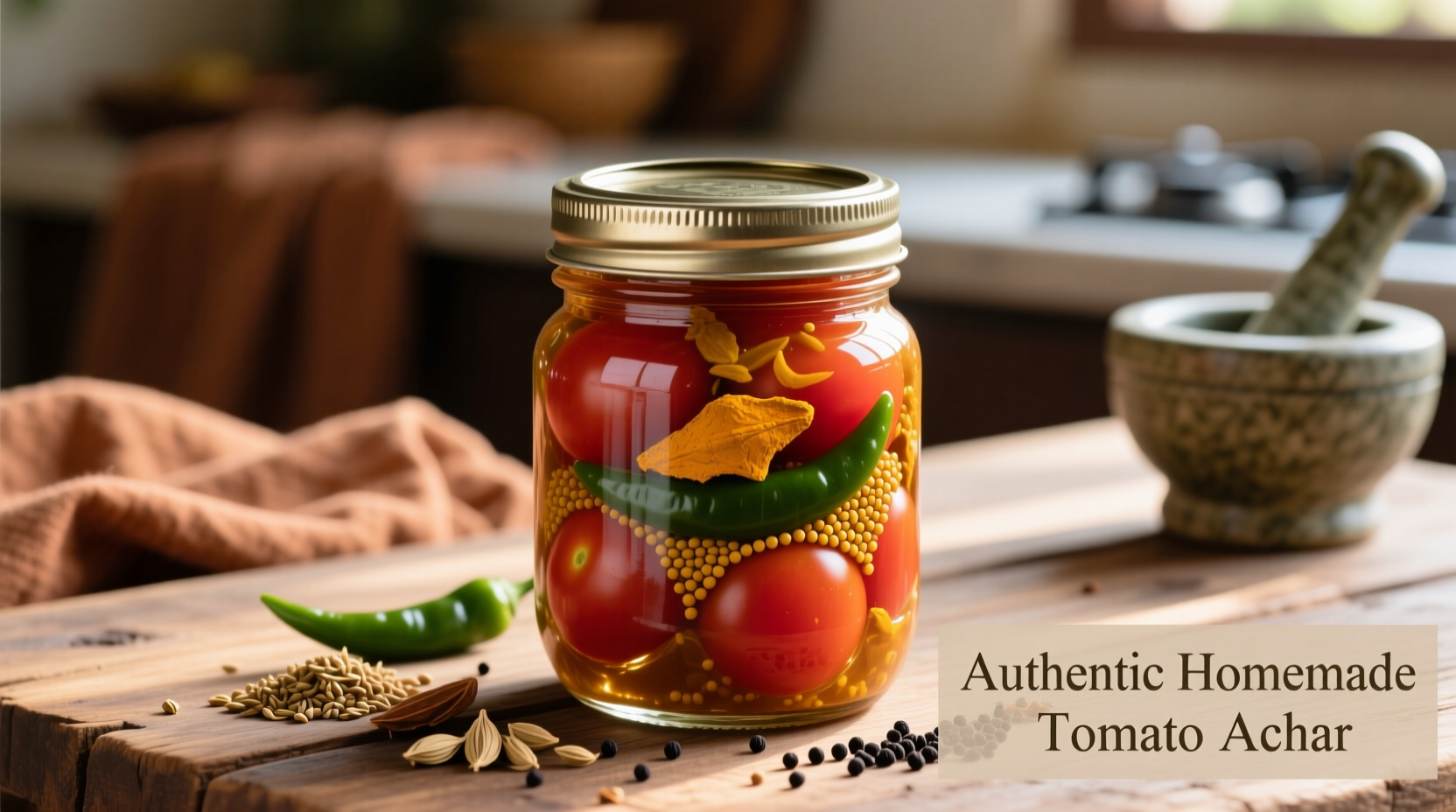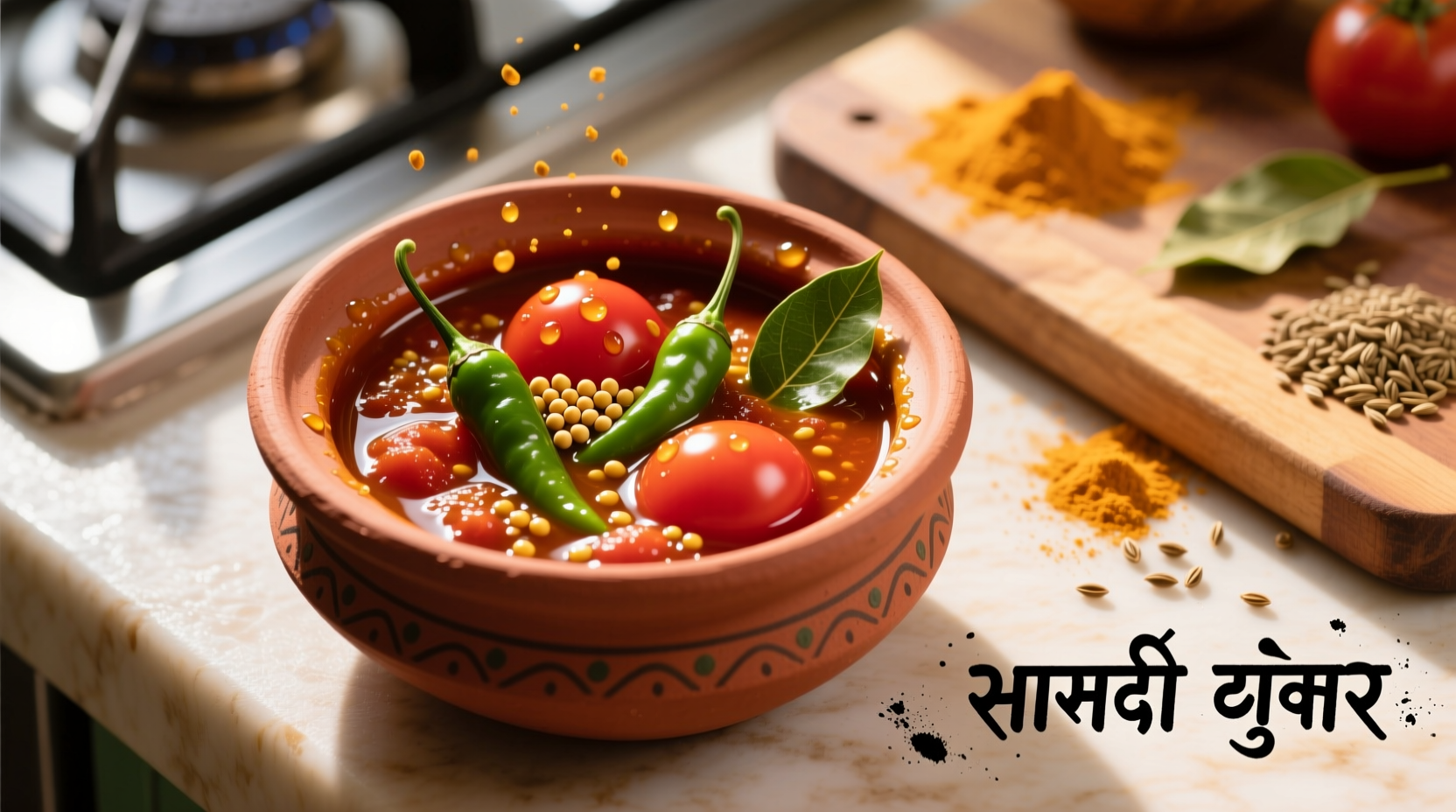Discover how this centuries-old South Asian preservation technique transforms ripe tomatoes into a versatile culinary treasure. Whether you're new to Indian pickles or seeking authentic preparation methods, this guide provides everything needed to create restaurant-quality tomato achar at home using time-tested techniques passed through generations.
The Cultural Significance of Tomato Achar
Tomato achar represents more than just a condiment in Indian households—it's a culinary tradition connecting families across generations. Originating in the Indian subcontinent where seasonal tomato abundance required preservation, this pickle evolved through regional variations while maintaining core preparation principles. Unlike Western pickling methods that rely on vinegar, traditional Indian achar uses oil-based preservation with specific spice combinations that both flavor and protect the tomatoes.
| Region | Key Spice Variation | Preparation Distinction | Traditional Serving Context |
|---|---|---|---|
| North India | Amchur (mango powder) | Sun-dried tomatoes with mustard oil | With parathas and yogurt |
| South India | Tamarind pulp | Coconut oil base with fenugreek | Accompanying rice and sambar |
| Gujarat | Jaggery addition | Quick-pickled with minimal drying | As part of meal platter (thali) |
Essential Ingredients for Authentic Tomato Achar
The magic of tomato achar lies in its ingredient balance. Traditional recipes avoid vinegar, relying instead on natural preservation through proper drying and oil infusion. For best results, use firm, ripe tomatoes that haven't begun to soften. The Indian Council of Agricultural Research confirms that sun-drying tomatoes before pickling reduces moisture content to safe levels for oil-based preservation, preventing spoilage (ICAR Food Preservation Guidelines).
Mustard oil serves as the preservation medium, but requires proper heating to remove pungency while maintaining antimicrobial properties. Authentic recipes use specific spice ratios that create both flavor harmony and food safety:
- Tomatoes: 1 kg firm, ripe varieties (avoid overripe)
- Mustard oil: 1 cup, heated to smoking point then cooled
- Mustard seeds: 2 tablespoons, coarsely ground
- Fenugreek seeds: 1 tablespoon, dry roasted
- Red chili powder: 1-2 tablespoons (adjust to heat preference)
- Asafoetida (hing): 1 teaspoon
- Salt: 3 tablespoons (non-iodized)
Traditional Preparation Method
Creating authentic tomato achar requires patience but yields exceptional results. The USDA Food Safety and Inspection Service emphasizes that proper moisture control is critical in oil-based pickling to prevent botulism risks (USDA Preserved Foods Guidelines).
- Sun-dry tomatoes: Cut tomatoes into small pieces, spread on clean cloth in direct sunlight for 2-3 days until partially dried but not brittle
- Prepare spices: Dry roast mustard and fenugreek seeds separately, then coarsely grind
- Heat oil: Bring mustard oil to smoking point, cool to room temperature
- Combine ingredients: In sterilized jar, layer tomatoes with all spices and salt
- Add oil: Pour cooled oil to completely cover tomatoes
- Mature: Store in dark place for 10-14 days before first use
Regional Variations Worth Exploring
Tomato achar's evolution reflects India's diverse culinary landscape. In coastal regions, cooks often add dried shrimp for umami depth, while mountain communities incorporate local wild herbs. The Food and Agriculture Organization documents how traditional preservation methods like achar making have sustained food security across South Asia for centuries (FAO Traditional Food Systems Report).
For those seeking milder versions, Gujarat's sweet-tangy variation uses jaggery and minimal chilies. South Indian adaptations frequently include curry leaves and mustard seeds tempered in coconut oil. Each regional approach maintains the core preservation principles while reflecting local taste preferences.
Storage Guidelines for Maximum Shelf Life
Proper storage determines both safety and flavor development of tomato achar. Always use completely dry utensils when serving to prevent moisture introduction. The National Center for Home Food Preservation recommends oil-based pickles maintain quality for 6-8 months when stored in airtight containers away from direct sunlight (NCHFP Storage Guidelines).
Signs of spoilage include:
- Cloudy or murky oil
- Mold growth on surface
- Unpleasant sour or fermented smell
- Discoloration beyond deep red-orange
Serving Suggestions to Elevate Everyday Meals
Tomato achar's versatility makes it more than just a condiment. Stir a teaspoon into lentil dishes for depth, or mix with yogurt for a quick dip. Many Indian households serve it alongside simple meals to transform basic dishes:
- With steamed rice and ghee for a satisfying meal
- As a sandwich spread replacing mustard
- Mixed with cooked vegetables for instant flavor boost
- Alongside grilled meats or fish for contrasting tang
- As a base for quick pasta sauces

Common Mistakes to Avoid
Even experienced cooks encounter challenges with tomato achar. The most frequent error involves insufficient drying of tomatoes, leading to spoilage. Another common issue is using iodized salt, which can cause discoloration and affect preservation. Always ensure your containers are completely dry before filling—any moisture introduces bacteria that compromise the pickle.
For optimal flavor development, resist the temptation to use the achar immediately. The two-week maturation period allows spices to fully infuse the tomatoes, creating the complex flavor profile characteristic of authentic preparations.











 浙公网安备
33010002000092号
浙公网安备
33010002000092号 浙B2-20120091-4
浙B2-20120091-4